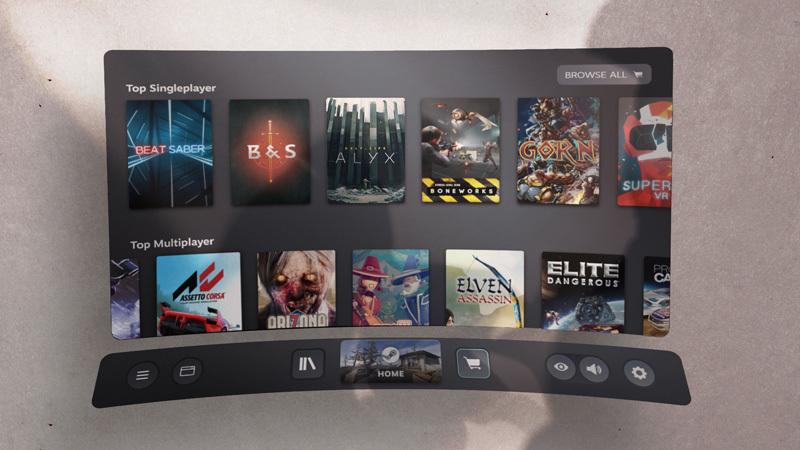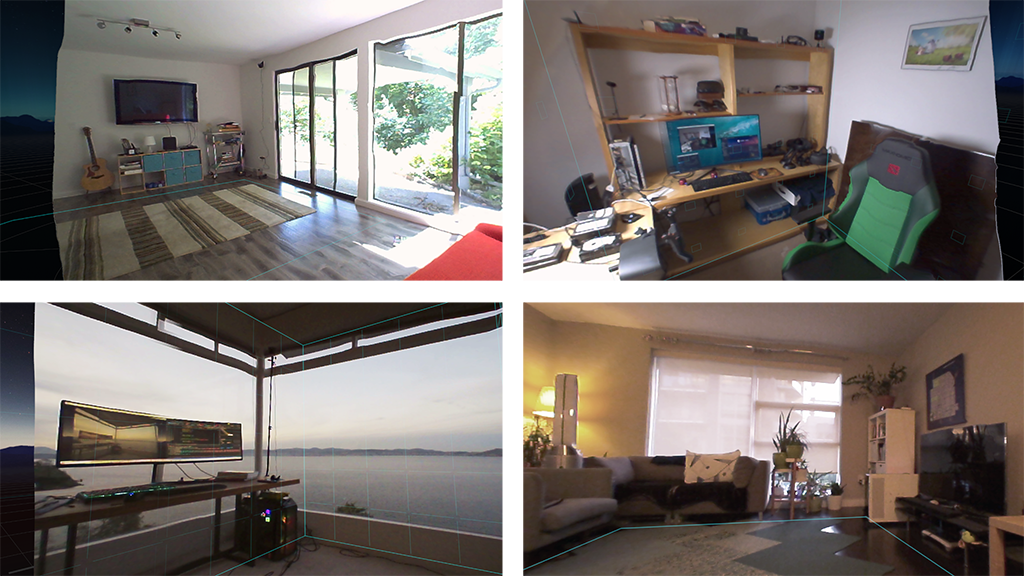Transitioning To OpenXR
We are thrilled that over the past four years developers have released more than 4000 OpenVR titles on Steam, supporting all major PC VR headsets.

The challenge we as an industry have faced with many of these titles is that for developers targeting multiple VR platforms, it requires extra time and effort to build polished applications that work across SDKs. In order to solve this and support the next generation of VR applications, we are moving forward to the OpenXR API.
OpenXR was created with the goal to enable engines and developers to target a single non-proprietary SDK, easing the friction in creating polished VR experiences. Valve has worked closely with VR hardware vendors, game engine developers, and graphics hardware providers to develop this new API and we believe it represents a big step forward in cross-vendor application support.
As a result, we expect new features on SteamVR to appear on the OpenXR side, rather than as new OpenVR APIs, and we want to outline exactly what that means for both developers and users.
First, it does not mean that OpenVR support is going away. OpenVR applications will continue to work not just on hardware that exists today, but also on the headsets of tomorrow. This is a key strength of the PC ecosystem and one that we intend to fully support with existing OpenVR applications.
We have been working with engine developers to ensure that OpenXR is well supported in the major game engines.
Epic has made exciting progress on this front with Unreal. The recently released Unreal Engine 4.24 includes built-in OpenXR support, and it's just a checkbox away.
On Unity, the latest SteamVR Unity Plugin (beta) supports Unity XR for rendering and SteamVR Input for controller processing, currently via the OpenVR API. We intend to continue development of this plugin in the push towards OpenXR.
The open source community, including Blender and Godot, have begun adopting the OpenXR API as well, and are making good progress in their implementations.
OpenXR support is now available in SteamVR Beta, and we would love to have developers try it out and give us feedback. You can find out more information about that here.
Thanks for coming on this journey with us. We're excited to see where this next chapter in VR takes us.

The challenge we as an industry have faced with many of these titles is that for developers targeting multiple VR platforms, it requires extra time and effort to build polished applications that work across SDKs. In order to solve this and support the next generation of VR applications, we are moving forward to the OpenXR API.
OpenXR was created with the goal to enable engines and developers to target a single non-proprietary SDK, easing the friction in creating polished VR experiences. Valve has worked closely with VR hardware vendors, game engine developers, and graphics hardware providers to develop this new API and we believe it represents a big step forward in cross-vendor application support.
As a result, we expect new features on SteamVR to appear on the OpenXR side, rather than as new OpenVR APIs, and we want to outline exactly what that means for both developers and users.
First, it does not mean that OpenVR support is going away. OpenVR applications will continue to work not just on hardware that exists today, but also on the headsets of tomorrow. This is a key strength of the PC ecosystem and one that we intend to fully support with existing OpenVR applications.
We have been working with engine developers to ensure that OpenXR is well supported in the major game engines.
Epic has made exciting progress on this front with Unreal. The recently released Unreal Engine 4.24 includes built-in OpenXR support, and it's just a checkbox away.
On Unity, the latest SteamVR Unity Plugin (beta) supports Unity XR for rendering and SteamVR Input for controller processing, currently via the OpenVR API. We intend to continue development of this plugin in the push towards OpenXR.
The open source community, including Blender and Godot, have begun adopting the OpenXR API as well, and are making good progress in their implementations.
OpenXR support is now available in SteamVR Beta, and we would love to have developers try it out and give us feedback. You can find out more information about that here.
Thanks for coming on this journey with us. We're excited to see where this next chapter in VR takes us.
